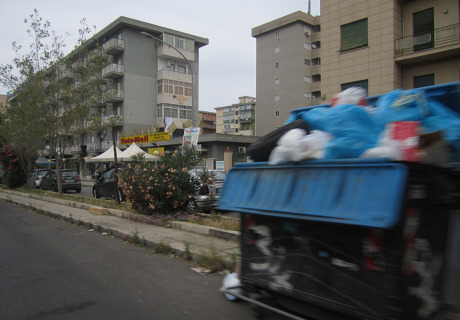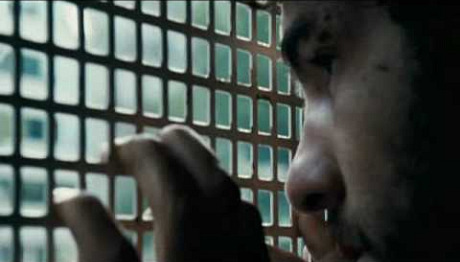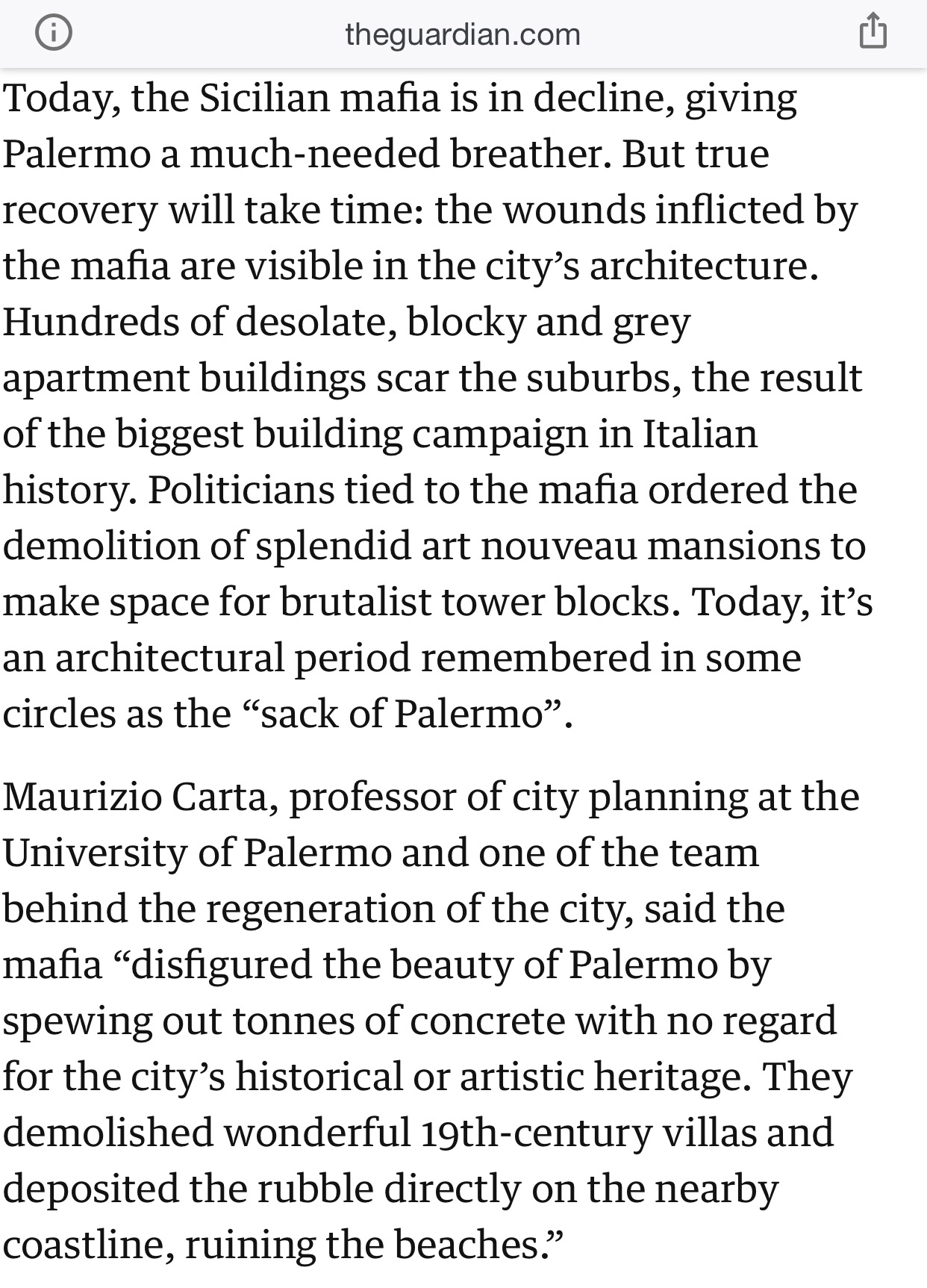I did a little reading about Palermo over the last few weeks, knowing I’d be visiting there during my post-Cannes travels. And having yesterday spent a few hours traipsing around Palermo’s mean streets, I can now state with authority that certain travel writers and travel websites have lied through their teeth about the largely ugly and rancid nature of this city.

Entering Palermo — Friday, 5.28.10, 11:55 am.
Palermo is a Mafia rathole — a corrupt, crime-infested, economically challenged, overly-congested sprawl of mostly unattractive apartment and commercial buildings (mostly of a skanky gray, grayish-brown or dogshit-orange color) with a few historical buildings and commercial diversions to keep the tourists happy or at least diverted.
I’m sorry but my primary impressions are as follows: air-polluted, generally unkempt, vaguely smelly, over-populated, too many buses and scooters, overstuffed garbage bins — a festival of clutter and crap. Certainly not what anyone would call “clean” or “well-maintained.”
Are there tiny little pockets of beauty and cultivation here and there? I’ve read about them and I’m sure they exist (I’m sitting in a very pleasant air-conditioned hotel lobby five blocks from the harbor), but much or most of Palermo feels like some kind of hot and humid third–world nightmare that you can’t escape from fast enough.
The various mafia corruptions are probably the main reason why Palermo feels like a “favela” out of Fernando Meirelles‘ City of God.
Napoli, Italy’s other urban armpit, is also crime-infested, and it looks, feels and smells the same way. The influence of the Cosa Nostra is not good for tourism because the guys who’ve profited from what’s happened in these cities are clearly opposed to civic enhancement when it interferes with stuffing their own pockets.
Wikipedia’s Palermo page says the following: “The main topic of the contemporary age is the struggle against Mafia and bandits like Salvatore Giuliano, who controlled the neighboring area of Montelepri. The Italian State had to share effective control, economic as well as the administrative, of the territory with the Mafiosi families.

“The so-called ‘sack of Palermo‘ is one of the major visible faces of this problem. The term is used to indicate the wildcat, unregulated speculations that filled the city with brutalist apartment buildings. The reduced importance of agriculture in the Sicilian economy had led to a massive migration to the cities, especially Palermo, which swelled in size.
“Instead of rebuilding the city center the town was thrown into a frantic expansion towards the north, where practically a new town was built. The regulatory plan for the expansion was largely ignored. New parts of town appeared almost out of nowhere, but without parks, schools, public buildings, proper roads and the other amenities that characterise a modern city.
“The Mafia played a huge role in this process, which was an important element in the Mafia’s transition from a mostly rural phenomenon into a modern criminal organisation. The Mafia took advantage of corrupt city officials (a former mayor of Palermo, Vito Ciancimino, has been condemned for his bribery with Mafiosi) and protection coming from the Italian central government itself.
“The historic city center is still partly in ruins, the traffic is horrific, and poverty is widespread. Being the city in which the Italian Mafia historically had its main interests, it has also been the place of several recent well-publicized murders. Situated on one of the most beautiful promontories of the Mediterranean, Palermo is anyway an important trading and business centre and the seat of a University frequented by many students coming from Islamic countries, as its relationships with Muslim world were never ceased.”










